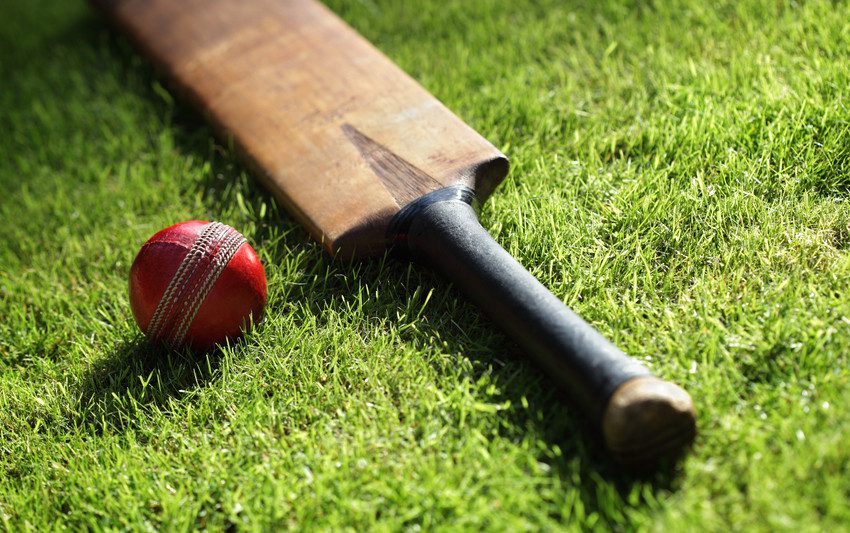Welcome to the world of cricket, where every swing, every shot, and every run counts! At the heart of this beautiful game lies one essential element that can make or break a player's performance: the grip on the bat. You might wonder why this seemingly simple aspect is so crucial, but the truth is, mastering your grip can significantly enhance your control and precision. In this blog post, we'll dive into the importance of grip and explore how to refine it for an edge on the cricket field.
Understanding the Importance of Grip

Have you ever watched a professional cricketer deliver a powerful shot, and thought to yourself, “How do they make it look so effortless?” Well, a significant part of that effortless performance comes down to a solid grip. Having a proper grip not only boosts your control over the bat but also affects your overall batting technique. Let's break this down further.
- Enhanced Control: A proper grip allows you to make adjustments mid-swing. It helps you maneuver the bat effectively, targeting specific areas of the field with confidence.
- Improved Power: The way you hold the bat directly impacts your ability to transfer energy from your body to the ball. A secure grip lets you generate more force, resulting in more powerful shots.
- Consistency: When you grip the bat consistently, your muscle memory kicks in, enabling you to replicate effective shots time and again. This leads to increased scoring opportunities.
- Reduced Injuries: A proper grip minimizes stress on the wrist, hands, and forearms, making you less susceptible to injuries caused by poor technique.
Remember, the right grip varies from player to player, as it often depends on personal preference, batting style, and comfort. So, investing the time to master your grip can truly transform your game in a remarkable way!
Choosing the Right Bat for Your Grip Style
Picking the right cricket bat is crucial, and it all starts with understanding your grip style. Different grips can really affect your game, so let’s dive into how you can choose the perfect bat based on how you hold it.
1. *Understand Your Grip Style: There are mainly three grip styles—Standard Grip, V Grip, and Reverse Grip. Each grip has its own unique characteristics and is suited for different playing styles. Knowing your preferred grip can help narrow down your options considerably.
2. Weight and Balance: When selecting a bat, consider the weight and balance in relation to your grip. A bat that is too heavy might hinder your control if you prefer a looser grip, while a lighter bat could affect your power shots with a tighter grip.
3. Handle Size: The handle of the bat can vary in thickness. A thicker handle usually suits players who prefer a firmer grip, whereas a thinner handle can offer more feel for those who like to adjust their grip frequently. Always try different handle sizes to see what feels most comfortable for you.
4. Blade Profile: The shape and profile of the blade impact how you can hold the bat. An oversized bat might be better for someone with a strong grip, while a more standard profile might work better for players with lighter hands.
5. Test Before You Buy*: Always hold the bats you’re considering to see how they feel with your grip. Swing them around a bit, and ensure your control is top-notch. It’s all about what works for you and your style!
Step-by-Step Guide to Holding the Bat Correctly
Getting your grip right is essential, and here's a straightforward guide to holding your cricket bat correctly for maximum control:
Step 1: Position Your Hands
- Place your bottom hand on the thicker part of the handle—this will be your dominant hand.
- Your top hand should rest just above it, with fingers wrapping around the handle securely.
Step 2: Create a ‘V’ Shape
Your grip should form a 'V' with your thumbs pointing down the shaft of the bat. This positioning is crucial for both control and power.
Step 3: Relax Your Grip
While control is vital, a tight grip can hinder your movement. Keep your hands firm yet relaxed to allow for quick adjustments.
Step 4: Find the Sweet Spot
Practicing where to make contact with the ball is essential. Most bats have a "sweet spot"; experimenting with the bat will help you find it.
Step 5: Practice Your Swing
After holding the bat correctly, practice your swings without hitting the ball. Focus on how your grip feels and make minor adjustments as necessary.
With these steps, you’re well on your way to mastering your grip and improving your game. Remember, practice makes perfect! Keep at it, and soon gripping the bat will feel second nature.
Common Mistakes to Avoid
When it comes to mastering your cricket bat grip, there are certain missteps that can hinder your performance and prevent you from getting the most out of your game. Let’s dive into some common mistakes players often make, so you can sidestep them and elevate your skills.
- Inconsistent Grip Pressure: Many players grip their bats too tightly or too loosely during different phases of their swing. An inconsistent grip can lead to poor shot execution and lack of control. Find that sweet spot where your grip is firm enough to maintain control but relaxed enough to allow for fluid movement.
- Neglecting the Bottom Hand: A common oversight is focusing solely on the top hand grip and neglecting the bottom hand. The bottom hand is crucial for guiding the bat and generating power. Remember to engage both hands equally for better control.
- Ignoring Bat Angle: The angle at which you hold the bat can dramatically affect your strike. Some players tend to hold the bat too flat or too steep. Adjust your angle according to your playing style and the type of shot you want to execute.
- Unawareness of Bat Handle Size: Using a bat with a handle that doesn’t fit your grip can make it hard to control your shots. It’s vital to choose a bat that suits your hand size and grip style for optimum performance.
- Static Positioning: Holding your bat in a stationary position can limit your responsiveness. Keep your grip adaptable; allow it to adjust as you read the bowler’s delivery.
Avoiding these common pitfalls can significantly impact your batting performance, making you a formidable opponent on the field. So pin those mistakes down and ensure your grip is as solid as it should be!
Practice Drills to Enhance Control
Improving your bat grip requires not just knowledge but also practice. Here are some effective drills that can help you enhance your control and make that grip second nature:
| Drill | Description | Frequency |
|---|---|---|
| Finger Grip Drill | Hold the bat with only your fingers, keeping the palms off. This helps in building finger strength and grip control. | 5 sets of 30 seconds |
| Shadow Batting | Practice your stroke techniques without a ball, focusing on grip and form. Visualize the ball and simulate shot execution. | 10 minutes per session |
| Target Practice | Set up targets in the nets and aim for them while focusing on maintaining a relaxed grip and follow-through. | 3-4 sessions per week |
| Partner Drill | Have a partner throw balls at varying speeds and angles. Practice adjusting your grip and bat angle based on the delivery. | 2-3 times per week |
| Static Hold | Hold your bat in a comfortable position, maintaining your grip for a minute or two. This builds endurance in your grip. | 2-3 times a week |
By regularly integrating these drills into your practice routine, you’ll not only master your grip but also gain the confidence to face any bowler that comes your way. Remember, consistency is key in building muscle memory and enhancing your overall batting performance!
Mastering the Art of Cricket Bat Grip for Superior Control
The grip is one of the most crucial aspects of batting in cricket, significantly affecting performance and control over the bat. A proper grip allows players to manipulate the bat effectively, leading to enhanced shot making and improved placement of the ball. Understanding the various gripping techniques can elevate a player’s skills and confidence at the crease.
There are several styles of grips that cricketers can adopt, each tailored to individual preferences:
- V-Grip: Common among players, it allows for better control. The index finger and thumb create a 'V' shape, which stabilizes the bat during shots.
- Box Grip: Involves all fingers being placed parallel to the handle, allowing for a powerful hit. This grip is often used by aggressive players.
- Bottom Hand Grip: The focus is mainly on the bottom hand, providing more power in shots like the drives and hooks.
To achieve the perfect grip, players should consider the following tips:
| Tip | Description |
|---|---|
| Relax your hands | A tense grip can hinder performance; a relaxed grip allows for better bat movement. |
| Ensure correct finger placement | Fingers should comfortably wrap around the handle without excessive pressure. |
| Practice regularly | Repetition is key; regular practice helps to develop muscle memory for a consistent grip. |
In conclusion, mastering the grip of your cricket bat is essential for achieving superior control and enhancing your batting performance. Regular practice and understanding the nuances of different grips will enable players to find their unique style, leading to greater success on the field.










